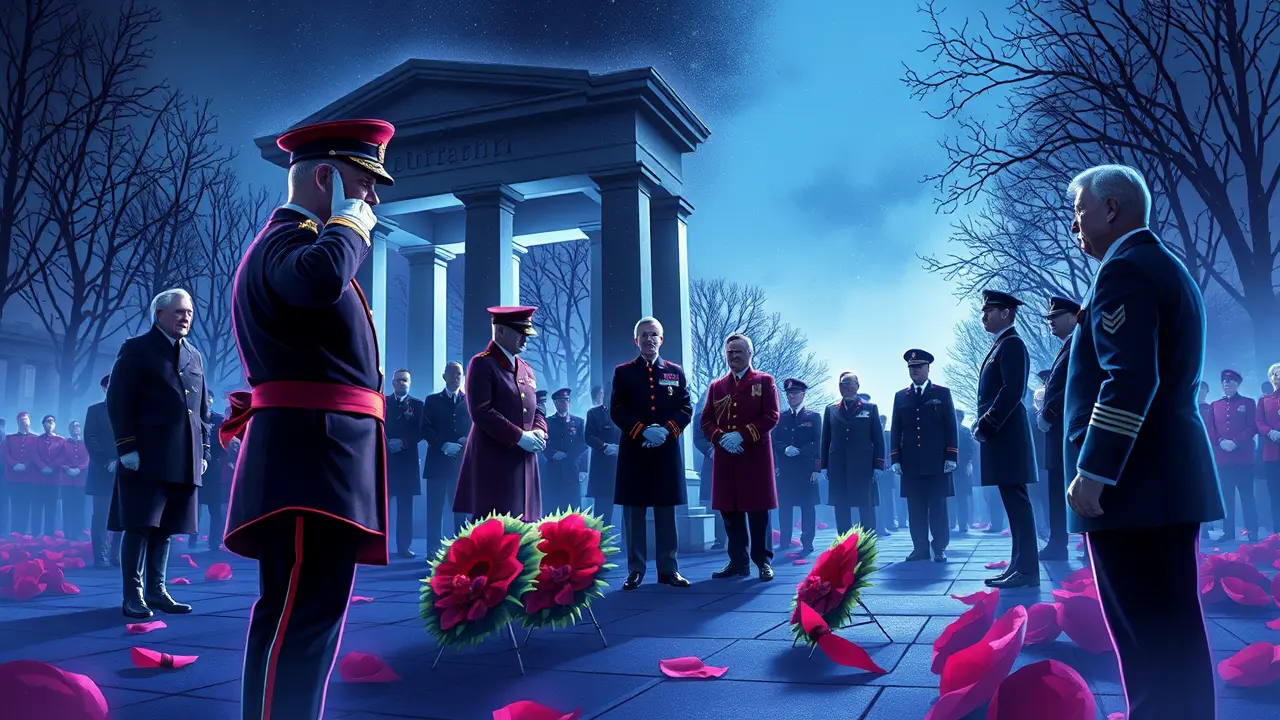- News
- governments-cabinets
- King Charles and senior politicians lead UK Remembrance Sunday service at Cenotaph – as it happened

Politicsgovernments & cabinetsPublic Statements
King Charles and senior politicians lead UK Remembrance Sunday service at Cenotaph – as it happened
RO
Robert Hayes
5 hours ago7 min read2 comments
The crisp, solemn air over Whitehall bore witness to a ritual as etched into the British national character as the stone of the Cenotaph itself. On this Remembrance Sunday, the two-minute silence at 11am GMT was not merely a pause but a profound, collective inhalation of memory, a tradition whose weight was felt from the heart of London to the parallel commemorations in Edinburgh, Cardiff, and Belfast, binding the nations of the United Kingdom in a shared, silent covenant with the past.The visual tableau was one of disciplined pageantry and historical continuity. The Prince of Wales, his posture rigid with purpose, laid his wreath while adorned in the Royal Air Force uniform of a Wing Commander—a sartorial choice rich with symbolism, connecting the monarchy directly to the nation's martial heritage and the legacy of the Battle of Britain, an era when the very survival of the realm hung in the balance.His salute was a sharp, precise gesture, a public performance of duty that echoed the countless salutes of servicemen and women across generations. He was followed in the solemn procession by the Duke of Edinburgh, with further tributes laid on behalf of the Duke of Kent and the Princess Royal, each figure representing a different branch of a family and an institution that has, for over a century, served as the focal point for national mourning and gratitude.This ceremony, however, transcends mere royal spectacle. It exists within a complex political and social ecosystem.The presence of senior politicians from across the spectrum, standing shoulder-to-shoulder with military leaders, is a powerful, if temporary, suspension of the partisan fray, a visual assertion that some duties of state rise above political combat. One is reminded of Churchill’s speeches during the Second World War, where he masterfully fused the language of national destiny with the gritty reality of sacrifice, a rhetorical strategy that this ceremony embodies in pure, unspoken form.The Cenotaph itself, an empty tomb, is a masterstroke of symbolic architecture; it mourns not a single individual but the abstract, immense concept of collective loss, making it a uniquely powerful site for a nation still grappling with the legacies of conflicts from the World Wars to Iraq and Afghanistan. Analysts might view this event as a crucial barometer of national unity and the monarchy's evolving role as a custodian of memory in an increasingly fragmented society.The unwavering public turnout, year after year, suggests a deep-seated need for ritual and collective identity, a need that the state, through this ceremony, seeks to fulfill. The consequences of any dilution of this tradition, or any perceived politicization of it, would be severe, potentially fracturing one of the few remaining civic rituals that commands near-universal respect. In the grand historical parallel, today's service is a direct descendant of the first Armistice Day observations, a thread of remembrance that has endured through a century of unimaginable social and technological change, proving that the need to honor sacrifice is a constant in the human condition.
#lead focus news
#King Charles
#Remembrance Sunday
#Cenotaph
#UK politics
#two-minute silence
#wreath laying
Stay Informed. Act Smarter.
Get weekly highlights, major headlines, and expert insights — then put your knowledge to work in our live prediction markets.
© 2025 Outpoll Service LTD. All rights reserved.